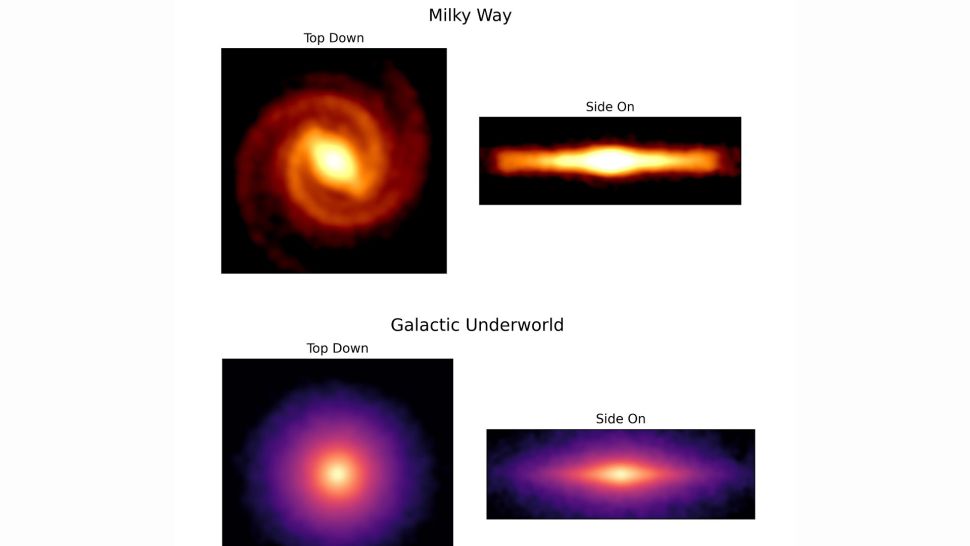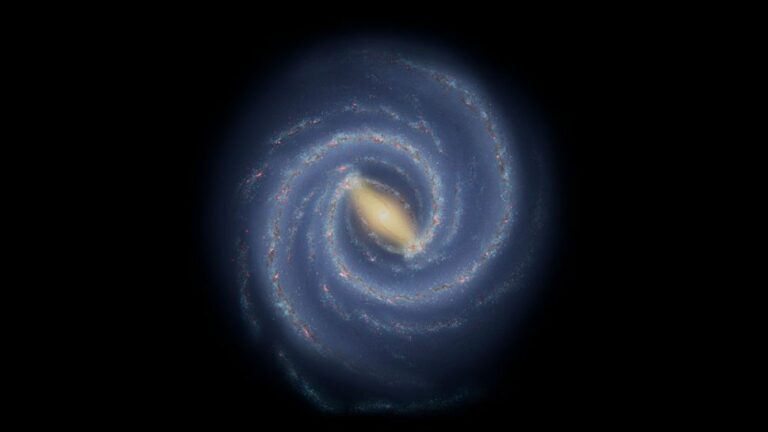Unveiling of the Milky Way’s cosmic cemetery’s first ever map
Remnants of ancient stars are sometimes kicked out of the galaxy.
The Milky Way is a huge cemetery. Stars are formed, burn out, and die, but they don’t just go; their corpses are left behind to haunt the cosmos.
Massive stars that died billions of years ago in the Milky Way went supernova and changed into two different kinds of things. The remaining cores either entered the afterlife as highly compact neutron stars or fell in on themselves to create black holes after having their outer layers blasted away by the power of the explosion. Scientists refer to the remnants of these ancient stars as the “galactic underworld,” which has kept the majority of its mysteries hidden up to this point.
The first computer map of the cosmic underworld has now been produced by astronomers after effectively turning back time to observe how and when these early stars were formed, lived, and died. They were able to achieve this by looking at observations of dead stars distributed around the galaxy, such neutron stars and black holes, and determining their origin and evolutionary history. They discovered a huge necropolis that was three times the present height of the Milky Way.
Why did it take so long to imagine the tombs of the galaxy? The Milky Way was only beginning to form when these early stars were born, and it looked quite different from the galaxy we know today—so different that even its spiral arms were still in the process of unfolding. It was difficult to even estimate where to look for hidden black holes and neutron stars, as compared to younger ones, which are dispersed over the current form of the Milky Way.
The new map, which was produced by astronomer David Sweeney and his associates at the University of Sydney, not only shows the potential locations of these ancient stars’ bones but also indicates that about one-third of the scattered remnants have already left the galaxy or are on the verge of doing so. Supernovas release enormous, erratic quantities of energy that may propel gas and dust at speeds of millions of miles per hour. It is nearly impossible to forecast where energy will be produced in larger or lower volumes.The study team had a particularly tough time estimating the energy used in each supernova explosion. The star’s gas and dust will be launched farther than nearby globules of star material if it is ejected in a region where it is exerting more force.

The study’s team discovered that whole neutron stars may have been expelled from the galaxy. It is not impossible for black holes to be thrown into the abyss since they can travel through space as rogue black holes.
We’re creating methods to search for [these things] now that we know where to look, according to a statement from Sweeney (opens in new tab). I’m willing to wager that the “galactic underworld” won’t remain a secret for very long.
The research is described in a paper published in Monthly Notices of the Royal Astronomical Society.
Source:SpaceCom
Do not forget to share your opinion with us to provide you with the best posts !




0 Comments